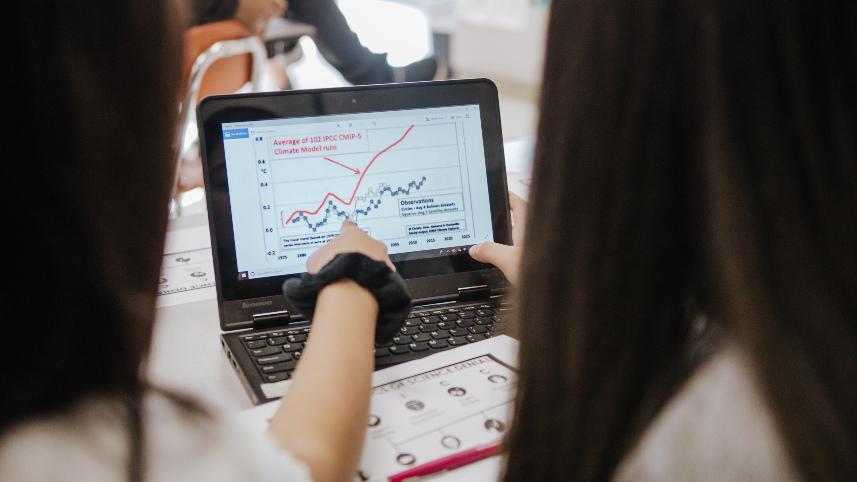Although the majority of science teachers address climate change in the classroom, they aren’t doing so fully and accurately. Our own research shows that teachers are not always well prepared to teach climate change and may therefore have misconceptions of their own. And let’s be honest: teachers are not the only ones who are sharing information with students regarding climate change. Students receive messaging from a variety of sources which may or may not be truthful. Unfortunately, students’ misconceptions persist and roll over into adulthood; currently 38% of U.S. adults do not accept anthropogenic climate change. I am not so far removed from the classroom that I do not remember the climate misconceptions students bring: the hole in the ozone is causing climate change, current warming patterns are natural, and scientists do not agree about the causes of climate change, among many, many others. Teachers are faced with a rising tide of difficulties and deserve an engaging approach to tackling students’ misconceptions that is at the same time flexible and easy to use. Our new climate change lesson sets offer just that.
What’s next for the lesson sets? They, along with their activities and investigations, are currently undergoing evaluation by our team of curriculum field testers, veteran classroom teachers who are teaching with them. The field testers will provide feedback on the efficacy of the lessons and ways in which we can improve them. Additionally, we expect to begin the development of evolution, climate change, and nature of science lesson sets for middle school classrooms. These units of study will adopt the same approach: inoculating students against misinformation.
The Teacher Support program has even more on the horizon. We also plan to support teachers with much needed professional development in order to utilize the curriculum with fidelity. In the 2022–2023 school year, we will begin initiatives to offer ongoing professional development at a district level as well as support pre-service teachers so they enter the classroom with the confidence to address students’ misunderstandings. It is with this 3-dimensional approach — misconception-based curricula, ongoing professional-development, and pre-service teacher training — that we will attempt to increase climate literacy.
We are already feeling the impacts of global warming, and if things continue the way they have, the impacts will only become more extreme. This decade may very well be the deciding factor in regard to our ultimate climate outcome. According to the IPCC’s most recent report, “The magnitude and rate of climate change and associated risks depend strongly on near-term mitigation and adaptation actions, and projected adverse impacts and related losses and damages escalate with every increment of global warming.” The technology needed to reduce carbon emissions and mitigate the impacts of climate change is available now, but the way forward is obstructed by misconceptions about anthropogenic climate change: it’s not real; it’s natural; it’s not so bad; it cannot be undone. But climate change is not a cliff off of which we will inevitably fall. There is potential for action, for change, for transformation. Anthropogenic climate change is real, it’s not natural, it’s grave, and it can be undone. The project of undoing it starts with climate literacy.


